In the northern embrace of Kerala, along the Arabian Sea’s pristine shores, lies Kannur, a district captivating hearts with its rich heritage, vibrant traditions, and untouched beauty. This crown jewel of Kerala’s culture beckons travelers with sun-drenched beaches, ancient forts whispering tales of the past, and the aromatic embrace of spice plantations. Witness the captivating Theyyam rituals, where tradition comes alive in a vibrant tapestry.
Embark on a journey through Kannur’s timeless landscapes, where history whispers from every corner and age-old traditions thrum with life. Immerse yourself in the vibrant cultural tapestry, where every street unfolds a story and festivals resonate with the fervor of a bygone era. This travel guide invites you to delve into the soul of Kannur, to unlock the secrets of this coastal paradise.
How to reach:
Air: Kannur International Airport (CNN) serves as the main gateway, offering domestic flights to major Indian cities and select international destinations. Taxis and public transportation are readily available at the airport for onward travel within Kannur.
Train: Kannur Railway Station (CAN) is a major junction with regular train services to various cities across India. Express and superfast trains ensure convenient access to Kannur. Upon arrival, taxis, auto-rickshaws, and buses provide connections to different parts of Kannur.
Road: Well-maintained highways and state roads link Kannur to other cities and towns. National Highway 66 connects Kannur to major Kerala cities, while State Highway 38 offers a scenic route to Coorg in Karnataka. Private and government buses, taxis, and rental cars provide convenient options for road travel.
Sea: While less common, Kannur can also be accessed by sea. The Azhikkal harbor facilitates fishing and cargo transportation. Occasionally, cruise ships dock at nearby ports like Mangaluru, offering an alternative arrival point.
Best time to visit:
Winters (October to March): This period reigns supreme for Kannur visitors. Expect comfortable temperatures (22°C to 32°C) with clear skies and gentle breezes, perfect for exploring Kannur’s outdoors and rich cultural tapestry. Witness vibrant Theyyam performances, temple festivals, and traditional rituals that come alive during this peak tourist season. Be sure to plan and book well in advance, especially for popular festivals and accommodation.
Summers (April to June): While the heat (25°C to 35°C) might limit outdoor activities, summer offers a chance to bask on Kannur’s beaches and enjoy water sports. Pack light, breathable clothing, sunscreen, and stay hydrated. This off-season boasts fewer crowds and lower accommodation prices, ideal for budget-conscious travelers. Expect occasional summer showers.
Monsoon (July to September): Heavy rainfall and high humidity define Kannur’s monsoon. The verdant landscapes and cooler temperatures might be enticing, but frequent rains can disrupt sightseeing and outdoor adventures. Pack rain gear! Trekking and nature walks are best avoided due to slippery trails and limited visibility. However, the monsoon unveils Kannur’s natural beauty at its peak, with cascading waterfalls, overflowing rivers, and lush greenery.
Attractions:
St. Angelo’s Fort (Kannur Fort):
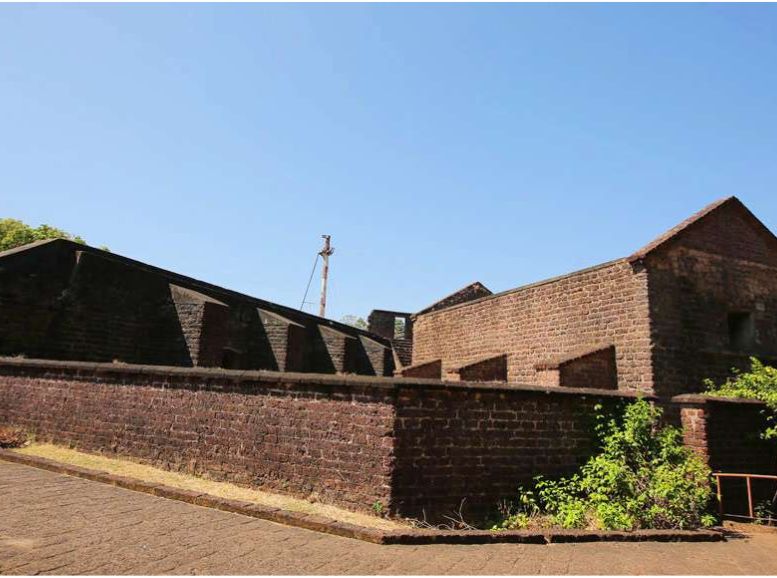
St. Angelo’s Fort, also known as Kannur Fort, is a captivating reminder of this place’s rich colonial history. Built by the Portuguese in the 16th century, this formidable structure witnessed the rise and fall of empires, enduring battles and sieges. Captured and further fortified by the Dutch and British, the fort showcases a unique blend of architectural styles and strategic features.
Explore the fort’s sturdy walls, imposing bastions, and even secret tunnels. Let your imagination wander back to a bygone era of maritime trade and military power. Perched atop a cliff overlooking the Arabian Sea, St. Angelo’s Fort offers breathtaking panoramic views of the azure waters and distant horizons. This captivating landmark is a must-visit for history buffs and photography enthusiasts alike.
Muzhappilangad Drive-in Beach:

Imagine cruising along the Malabar Coast on pristine sands. Muzhappilangad Drive-in Beach, stretching over four kilometers, offers this unique experience. Feel the freedom of driving right onto the beach, the rhythmic waves and cool breeze washing over you. This isn’t just a scenic drive; it’s a playground for adventure.
Thrill seekers can partake in exhilarating water sports like parasailing and jet skiing. For a more relaxed pace, soak up the sun, build sandcastles, or play beach volleyball. Muzhappilangad Drive-in Beach caters to every mood, promising an unforgettable escape for all.
Payyambalam Beach:
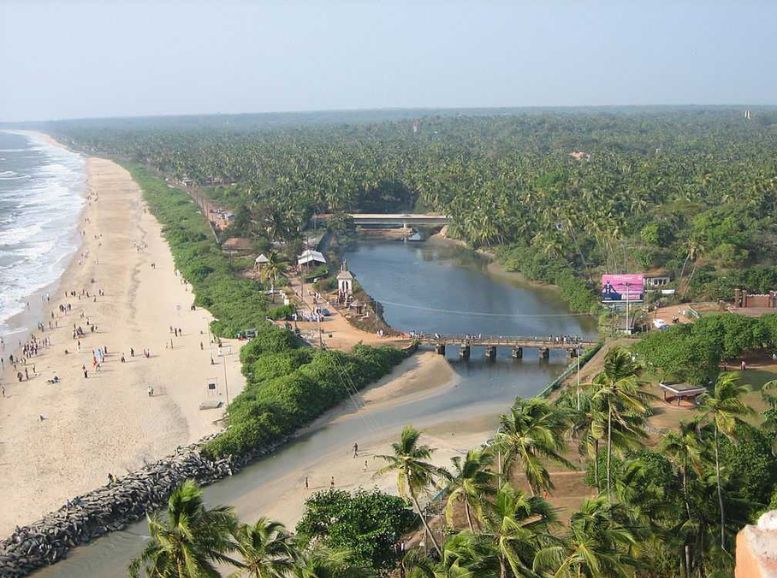
On Kerala’s Malabar Coast, Payyambalam Beach unfolds as a haven of serenity. Pristine shores and calming vibes make it ideal for those seeking a nature escape. Take leisurely walks on the soft, golden sand, feeling the gentle rhythm of the waves lull you into relaxation. Watch romantic sunsets paint the sky in vibrant hues.
For a touch of activity, take a dip in the clear waters or try your hand at beach volleyball or kite flying. Payyambalam Beach occasionally comes alive with cultural events and festivals, offering a glimpse into Kerala’s rich heritage and traditions. This serene beach promises an unforgettable experience for those seeking tranquility by the azure sea.
Arakkal Museum:
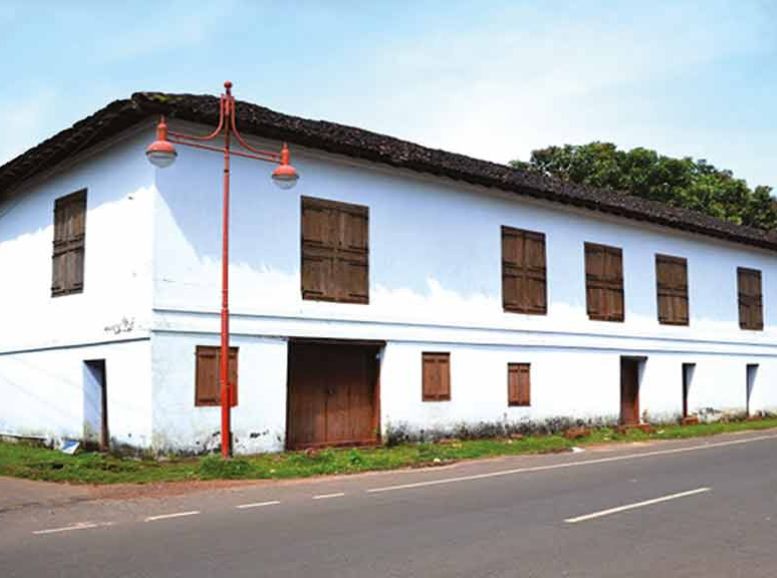
Nestled within the walls of the historic Arakkal Palace, the Arakkal Museum unveils the captivating story of Kannur’s only Muslim royal family – the Arakkals. Step back in time and explore the opulent lifestyle of this noble lineage.
Meticulously preserved artifacts, portraits, and memorabilia bring the Arakkal dynasty to life. Intricate furniture speaks of royal comfort, while attire and weaponry hint at their traditions. Each exhibit sheds light on the cultural, social, and political influence of the Arakkals.
Kannur Beach House:
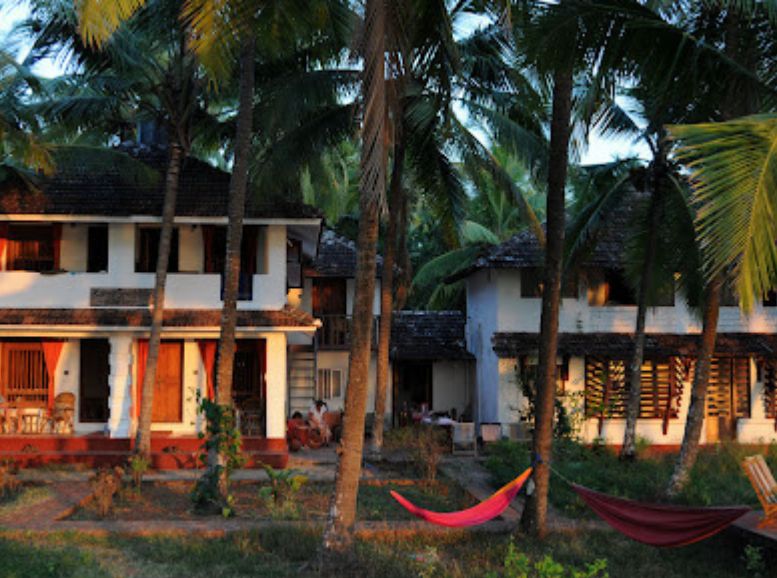
Experience the magic of Kerala’s coast at Beach House. This serene escape, nestled amidst swaying palms and overlooking the Arabian Sea, offers a tranquil haven for relaxation. Spacious rooms, adorned with local touches, create a rustic elegance.
The friendly hosts invite you to savor authentic Kerala cuisine. Using fresh, local ingredients and age-old recipes, they prepare a feast for your senses – from seafood specialties to vegetarian delights. Each meal is a celebration of Kerala’s culinary heritage.
Dharmadam Island:
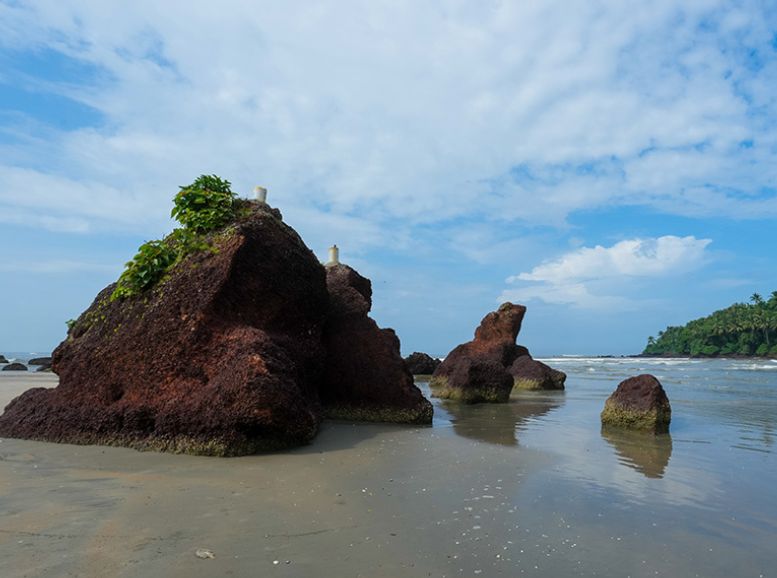
Just off Kannur’s coast lies Dharmadam Island, a hidden gem veiled by tranquility. This secluded paradise emerges during low tide, inviting visitors with its pristine beaches, swaying coconut palms, and crystal-clear waters. Imagine strolling along the sandy shores, collecting seashells as vibrant birds paint the sky. Lush greenery creates a serene haven for picnics, yoga, or meditation retreats, allowing you to reconnect with nature’s rhythm. Adventure awaits – explore the island by kayak, snorkel vibrant reefs teeming with life, or simply relax under the warm tropical sun.
Dharmadam Island’s unspoiled beauty and tranquil charm offer a slice of paradise. Here, time seems to slow down, and worries fade with the gentle caress of the sea breeze.
Local Experiences:
1. Witness the Mystique: Theyyam Rituals
Immerse yourself in the vibrant tapestry of this place by experiencing Theyyam, an ancient ritualistic dance rooted in North Kerala. Witness mesmerizing performances, where elaborate costumes and pulsating rhythms bring folklore and deities to life.
2. Breathe in the Aromas: Spice Plantation Tours
Embark on a journey through Kannur’s verdant heart. Explore lush spice plantations bursting with cardamom, pepper, cinnamon, and a symphony of other exotic aromas. Guided tours will unveil the secrets of spice cultivation from seed to harvest.
3. Weave Your Own Story: Handloom Weaving Workshops
Uncover the magic of this place’s textiles. Visit local weaving cooperatives and workshops to witness the intricate art of handloom weaving firsthand. Under expert guidance, even try your hand at weaving, creating a unique souvenir of your Kannur experience.
4. A Culinary Adventure: Food Experiences
From bustling markets overflowing with fresh produce to cooking classes and street food tours, delve into the rich tapestry of Kannur’s cuisine. Discover a world of diverse flavors, from fiery curries to fresh seafood specialties.
5. Unleash Your Creativity: Art and Handicraft Workshops
Put your creativity to the test! Participate in hands-on workshops where you can learn traditional art and handicraft techniques passed down through generations. Explore wood carving, pottery making, or traditional painting styles, taking home a unique piece of Kannur’s artistic heritage.
6. Live Like a Local: Village Homestays
Go beyond the tourist trail and experience the authentic pulse by choosing a village homestay. Immerse yourself in the daily life of local families, participating in cultural exchanges and creating lasting memories.
Travel tips:
Book Ahead, Relax Later: This place’s popularity soars, especially during peak seasons and festivals. Avoid last-minute scrambles by booking your accommodation in advance. This ensures a stress-free arrival and a comfortable haven throughout your stay.
Stay Hydrated: Kerala’s coastal climate can get humid, particularly in summer. Carry a reusable water bottle and sip regularly, especially during outdoor adventures and sightseeing.
Respect the Culture: This place’s boasts a rich cultural tapestry. Be mindful of local customs and traditions. Dress modestly at religious sites and cultural events. Seek permission before photographing locals.
A Culinary Adventure Awaits: Savor the delectable flavors of Kannur’s cuisine! From fresh seafood specialties to traditional Malabar fare, tantalize your taste buds at local eateries and street food stalls. Don’t miss out on this culinary adventure.
Explore Like a Local: Kannur’s well-developed public transport network of buses and auto-rickshaws makes navigating the city a breeze. Opt for these options whenever possible. It’s not only budget-friendly but also allows you to immerse yourself in the local rhythm.
Pack Smart: Breathable Clothing is Key: Kannur’s climate leans towards warm and humid. Pack light, breathable clothing that suits the weather. Don’t forget essentials like sunscreen, hats, sunglasses, and insect repellent for outdoor escapades.
Be Weather Wise: Occasional rain is part of the Kannur experience, especially during the monsoon (June to September). Stay updated on weather forecasts and plan your activities accordingly. Rainy days might be perfect for exploring indoor attractions.
Safety First: As with any destination, staying safe is paramount. Avoid venturing alone into isolated areas, particularly at night. Keep your belongings secure at all times.
Embrace the Culture: Kannur offers a treasure trove of cultural experiences. Be open-minded and participate in activities like Theyyam rituals or handloom weaving workshops. Embrace the opportunity to learn about the local way of life and create lasting memories.
Conclusion
Kerala’s northern gem, Kannur enthralls with a blend of natural beauty, rich heritage, and warm hospitality. Explore ancient forts whispering secrets, pristine beaches lapped by the Arabian Sea, vibrant festivals echoing with tradition, and captivating art forms passed down for generations. Immerse yourself in this vibrant tapestry – from St. Angelo’s Fort to mesmerizing Theyyam rituals, savor the flavors of Kerala’s cuisine. Every experience promises an indelible mark. As you depart, breathtaking landscapes, heartfelt encounters, and a deeper appreciation for Kannur’s timeless traditions linger. But the allure doesn’t end there. Kannur beckons you back, promising new adventures on every visit. Pack your bags, delve into the heart of North Kerala, and let Kannur weave its magic. Ready to embark? Explore more on Xplro.com, your ultimate travel companion to craft your dream Kannur escape.
FAQs
- How far is Kannur from Kochi Airport?
- It is approximately 130 kilometers away from Kochi Airport. The journey by road takes around 3 to 4 hours, depending on traffic conditions.
- What are the must-visit attractions in Kannur?
- Some must-visit attractions include St. Angelo’s Fort, Muzhappilangad Drive-in Beach, Arakkal Museum, Kannur Beach House, and Dharmadam Island.
- Are there any cultural festivals celebrated in Kannur?
- Yes, Kannur is renowned for its vibrant cultural festivals such as Theyyam rituals, temple festivals, and traditional art performances, which are celebrated throughout the year.
- Is Kannur safe for solo travelers?
- This place is generally safe for solo travelers, but it’s advisable to exercise caution, especially at night and in isolated areas. Being respectful of local customs and traditions is essential.
- What are the transportation options in Kannur?
- Kannur has a well-developed transportation network, including buses, auto-rickshaws, and taxis, providing convenient options for getting around the city and its surroundings.
- Are there any wildlife sanctuaries near Kannur?
- Yes, there are several wildlife sanctuaries near Kannur, such as Aralam Wildlife Sanctuary and Muthanga Wildlife Sanctuary, where visitors can explore the region’s diverse flora and fauna.
- What is the traditional cuisine of Kannur?
- The traditional cuisine of Kannur is known for its rich seafood dishes, including fish curry, prawn masala, and crab roast, along with traditional Malabar delicacies like biryani and appam.
- Can I visit Kannur during the monsoon season?
- Despite heavy rainfall from June to September, it’s still possible to visit Kannur and enjoy indoor attractions and cultural experiences during the monsoon season.
- What are some offbeat experiences in Kannur?
- Offbeat experiences include spice plantation tours, handloom weaving workshops, and village homestays, offering travelers unique insights into the region’s rural life and traditional crafts.
- Are there any adventure activities available in Kannur?
- Yes, Kannur offers various adventure activities like trekking, parasailing, jet skiing, and kayaking, providing exciting experiences for adventure enthusiasts.
- How can I learn more about the history and culture of Kannur?
- Visitors can learn about the history and culture by visiting museums, heritage sites, and attending cultural events and workshops organized by local communities.





